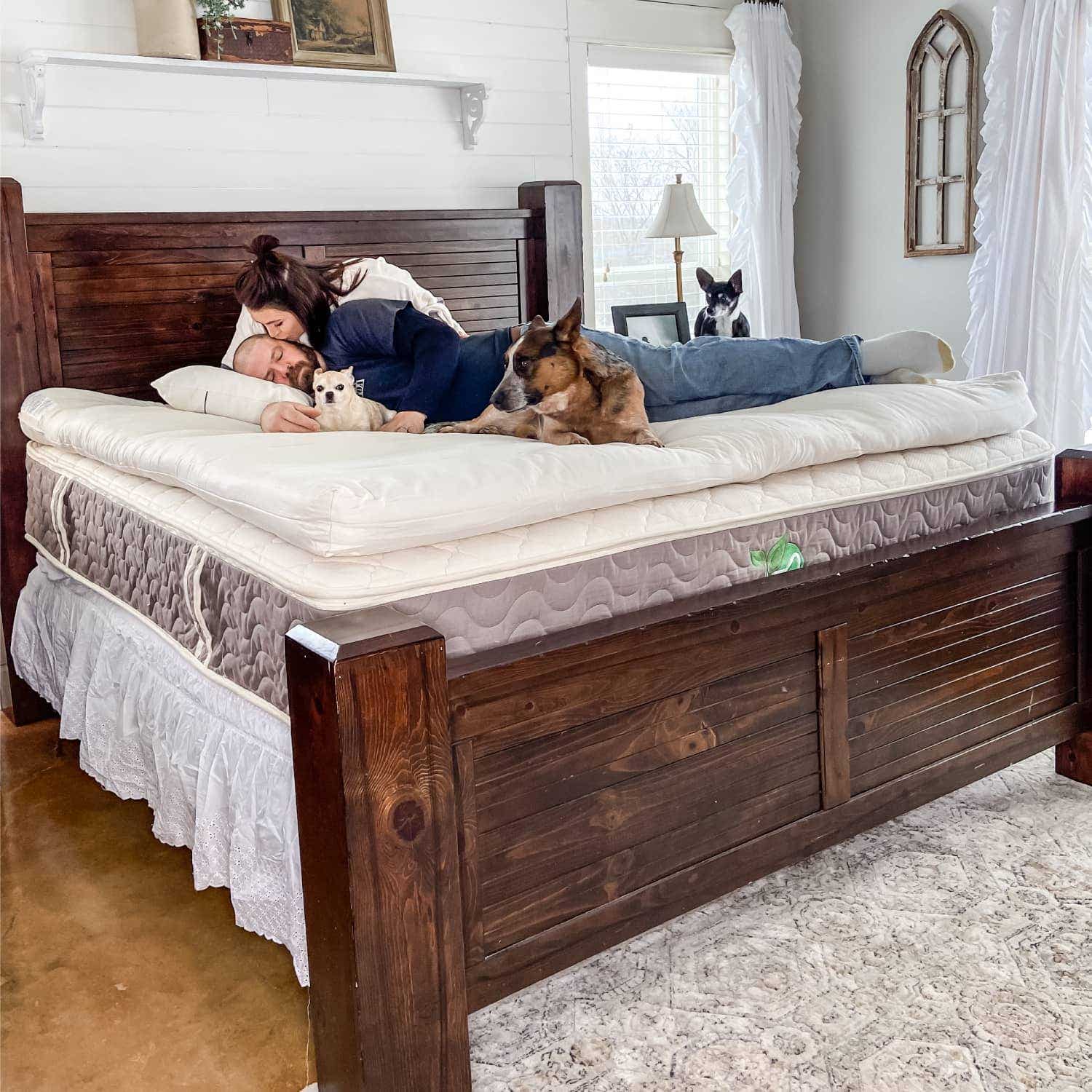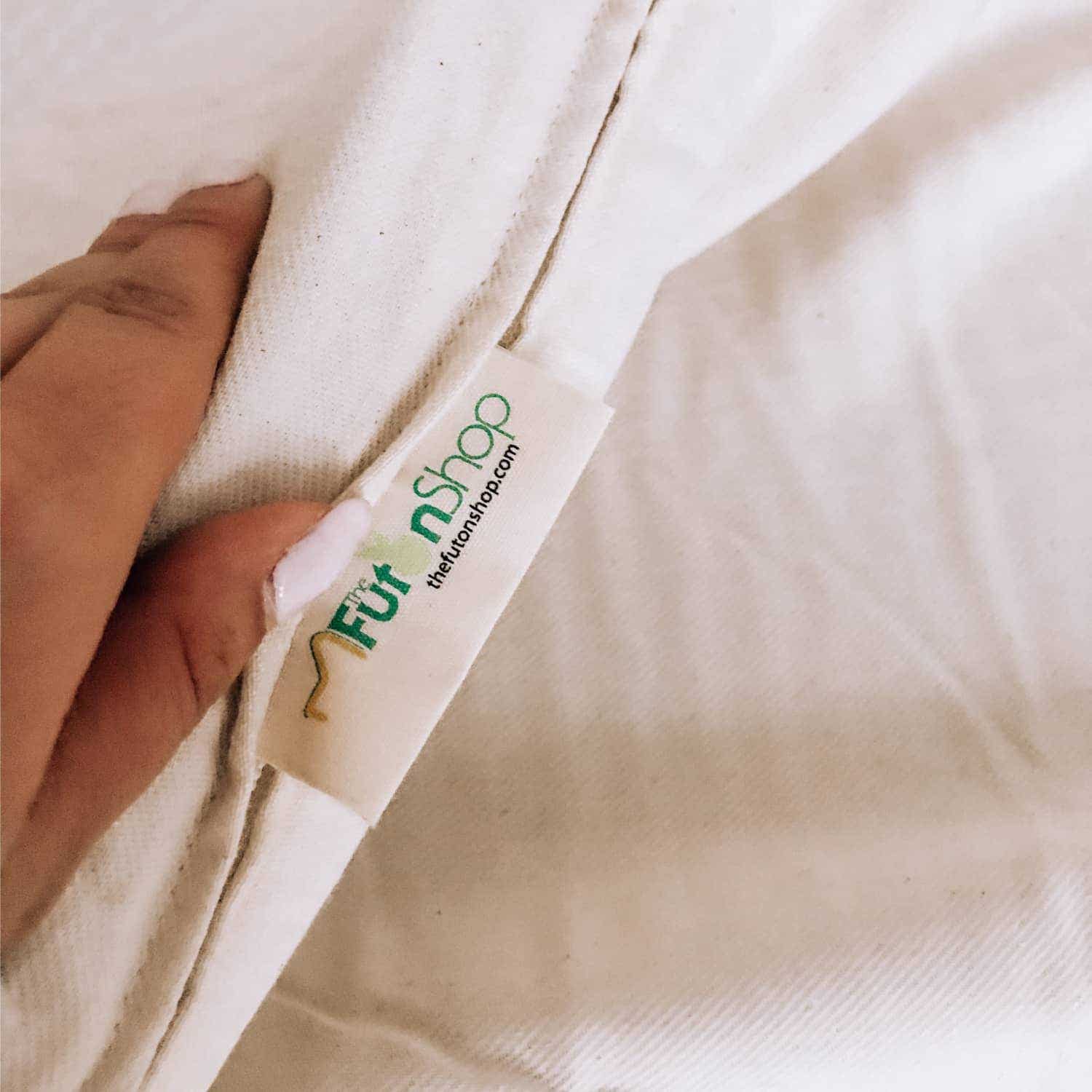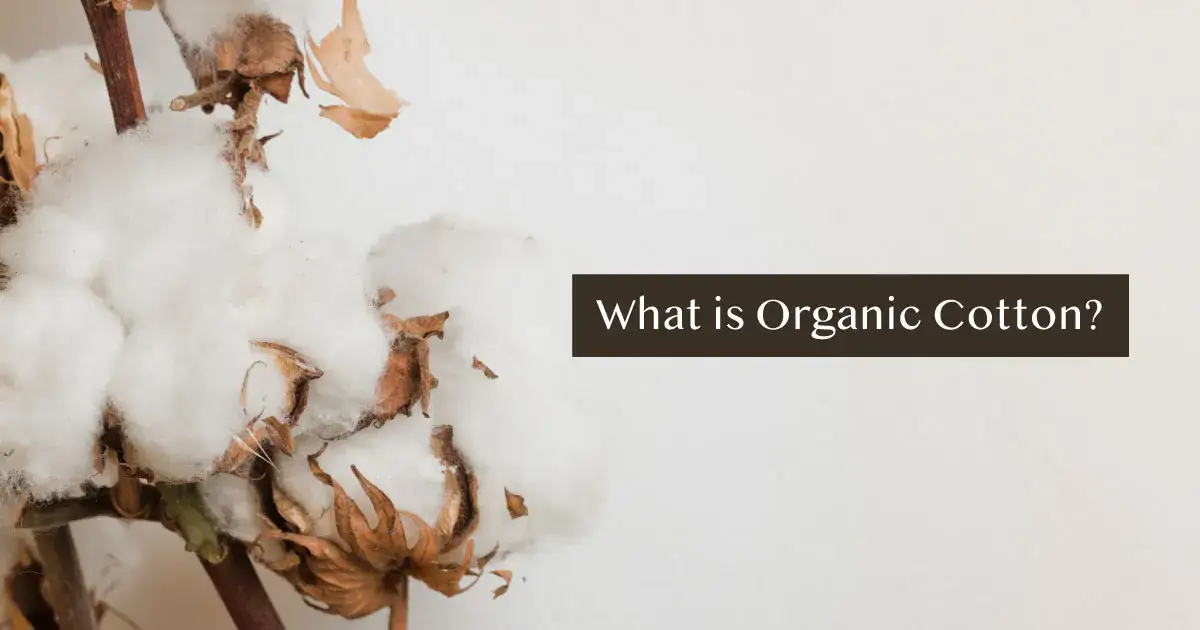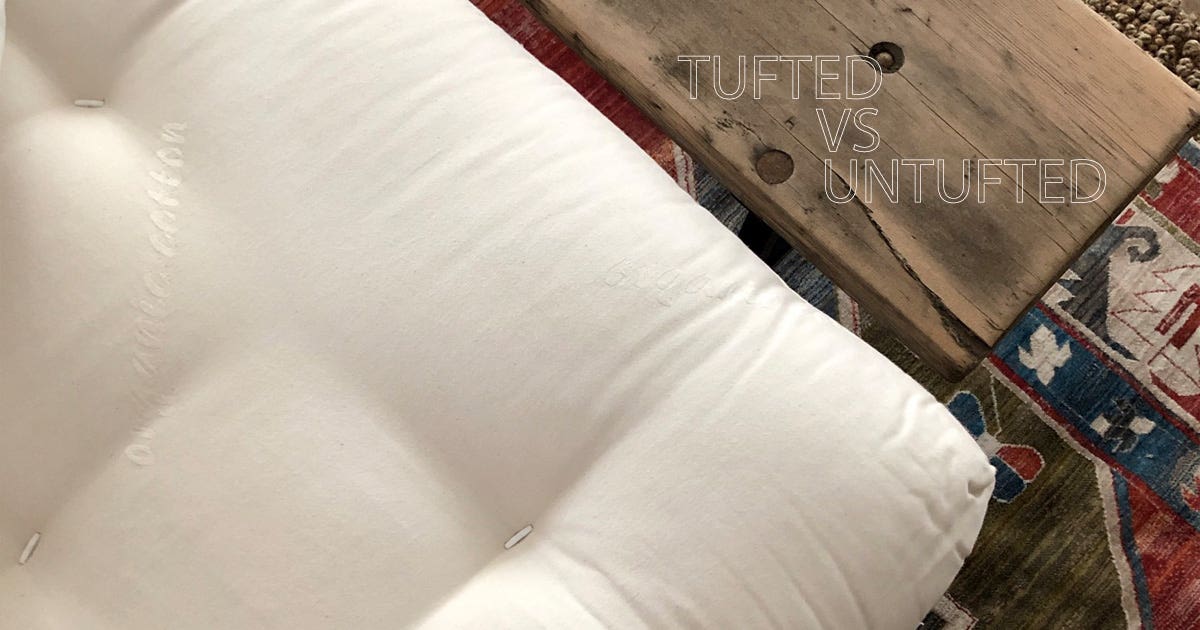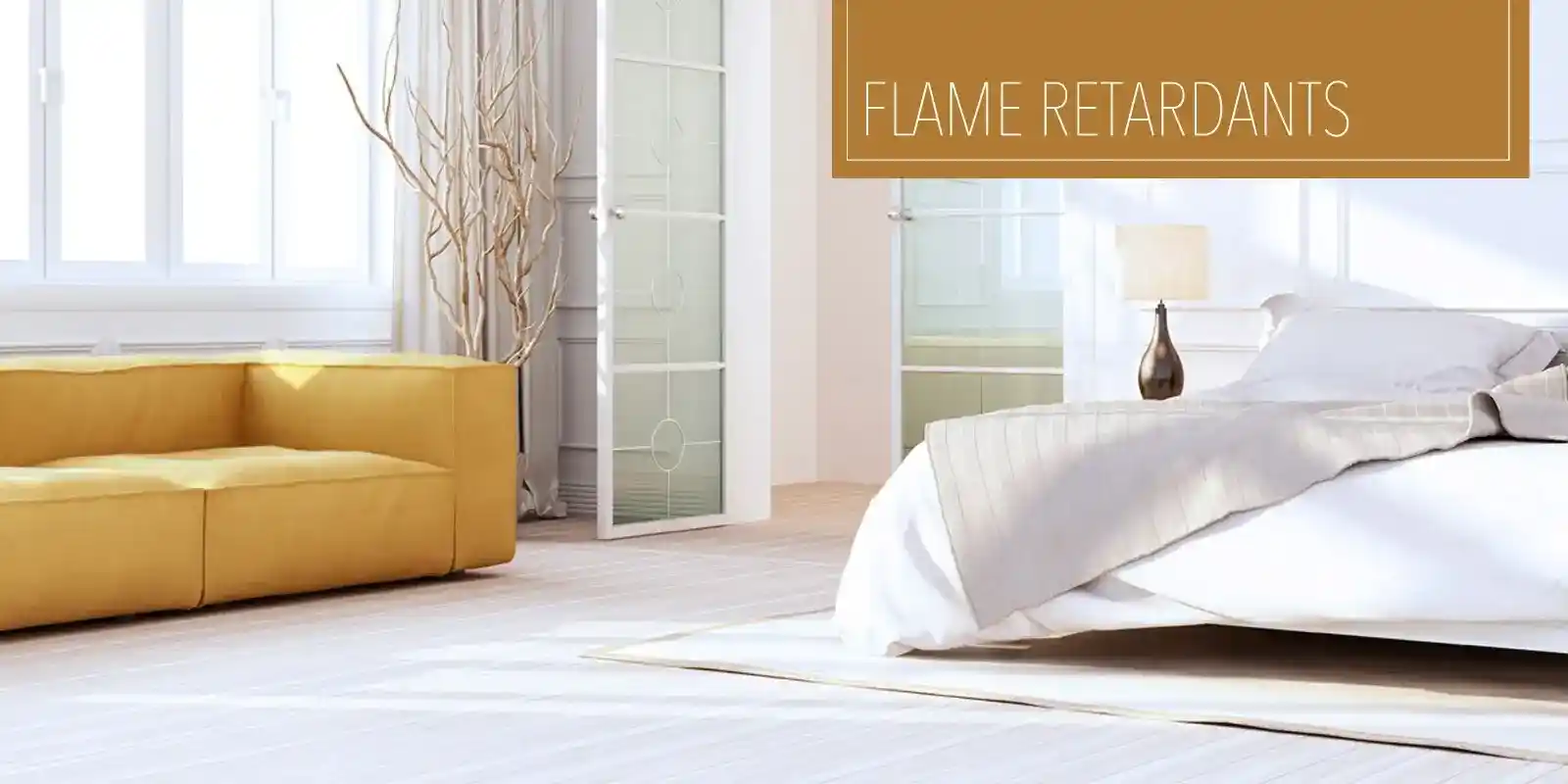
Federal regulations 16 CFR § 1632 and 1633, administered by the U.S. Consumer Product Safety Commission (CPSC), require all mattresses, and futon mattresses sold in the United States to meet flammability standards. California was the first to introduce an open flame safety requirement for residential bedding with bulletin TB603. The mattress industry has worked with the CPSC to set an effective and practical national standard. The Consumer Product Safety Commissions had a big part in creating (CPSC) 16CFR Part 1633 mattress Open Flame Standard.
Products that are to be tested under 16CFR part 1633 include a mattress that is only sold without a foundation; a mattress and foundation sold as a set only; and a mattress that is sold with the option of a foundation. 1633 law exempts one of a kind mattresses or mattress foundation sets manufactured pursuant to a physicians written prescription or with other comparable written medical therapeutic specifications. The law also mandates the manufacturer to document quality assurance program, to prevent or minimize defects in the manufacturing process including inspection of all components. All laws from the above must be implanted with imported mattresses as well. Mattresses that are separate from a futon frame or futon mattresses and traditional mattresses are not contributed to ca117.
In 2013 California finally changed its laws to try to eliminate fire retardants in mattress and furniture. The changing or updating of this law has profound affects on you and your health. If you have any mattress or upholstered furniture that you purchased between 1982 and 2013 you can be sure it is loaded with toxic and dangerous fire retardants. Whether it is your mother’s old couch, mattresses handed down, or even your old mattresses or sofa beds, these products almost certainly contain dangerous VOC and fire retardants.
What does Chemical free mattress mean? There are many laws both state and federal that can confuse the average consumer and retailers alike. Here is the breakdown to understand what is chemical free and what the consumer needs to know when shopping for a mattress or bedroom furniture. There are two laws for bedroom furniture surrounding Flame Retardants: two categories:
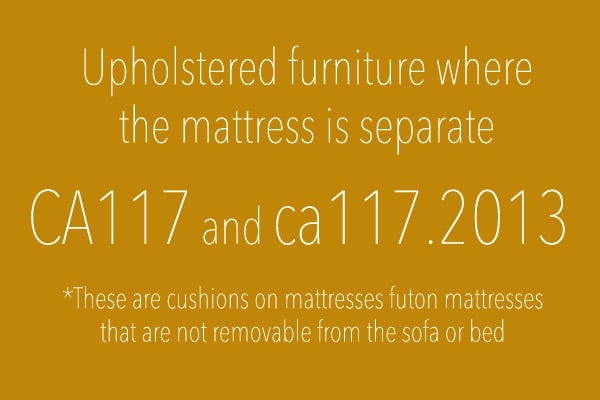
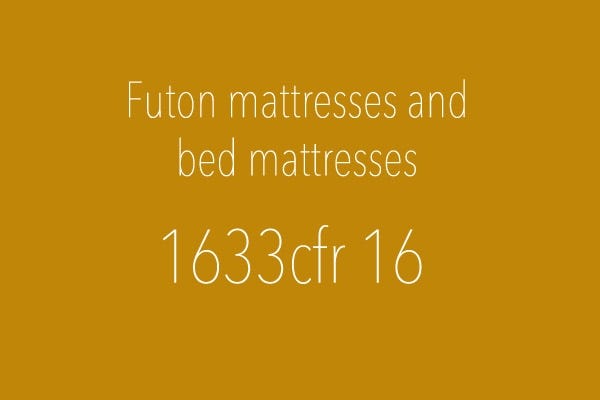
There are 2 laws that regulate flammability in furniture.
They are TB 117 and 16 CFR1633.
- compliance to 16 CFR Part 1633 – The open flame test. A federal standard in USA and all manufactured or imported mattresses and mattress sets must meet this standard.
- compliance to technical bulletin 117 – TB 117 is a flammability standard for upholstered furniture. This law requires that stuffing material in seating furniture withstand an open flame for at least twelve-seconds without catching fire. The TB 117-2013 standard, fully effective January 1, 2015, discontinues the open flame test and retains a modified version of the smolder test.
California law CA117 (TB 117) regulates flammability standards for upholstered furniture, such as click-clacks, sofa beds, and couches. The original 117 dealt with components being flame resistant. In order for polyurethane foams to pass, flame retardants needed to be added to the foam. An updated test, TB117-2013 looked at the product as a whole. Rather than each individual component passing the open flame test, a barrier fabric could be used and as long as the product or barrier did not burn, the product would pass. The reason why the law has changed is partly due to studies showing that the chemicals in the component smolder test in fire retardants are more harmful during a fire and the toxins released during a fire becomes airborne when the foam disintegrates.

Fire retardants such as wool, borate and Boric acid, a natural fire retardant, are not to be confused with man-made fire retardants. The chemicals in fire retardants that are not natural are TDCPP ( Chlorinated Tris), PentaBDE (pentabrominated diphenyl ether), and Firemaster 550. All the futon mattresses sold and made by The Futon Shop have fire retardants that are natural. These are boric acid (which can be omitted by a doctor's note) and wool.
Going back to harmful fire retardants and laws: before Technical Bulletin 117.2013 was implemented upholstered fire retardant law testing of fire retardants was different. The mattress was tested by a cigarette as a smolder test not open flame. Now it is tested on all components, which is called a smolder test. A smolder test starts with testing the first fabric by the cigarette for example on the leather or microfiber sewn on fabric. It is tested on an l-shaped foundation and if it melts it passes. The test applies to upholstered furniture components: cover fabrics, interior fabrics, welt cords, decking materials, barrier materials, and padding materials included but not limited to: battings of natural or man-made fibers, foamed or cellular filling materials, resilient pads of natural or man made fibers and loose particulate filling materials (such as shredded polyurethane or feathers or down)
Futon and mattresses are attributed to law 16cfr-1633 which is federal. Dangerous flame retardants are being added to mattresses every day. Not all Fire retardants are the same. Here are the dangerous ones. A big one that is not natural is PBDE, Polybrominated Diphenyl Ethers. It is a common chemical that was used in mattresses as a fire retardant until 2005 when it was banned in the United States. Unfortunately all foam decomposes with age and Harmful PBDE in older mattresses and therefore continues to pollute ones bedroom.

According to a EPA study in 2008, PBDE is especially toxic to the development of the brain, leading to damage in learning and behavior. Unfortunately, PBDE is used in China to manufacture fire resistant foams in furniture and mattresses, then imported into the US. Ensuring these chemicals are not in your mattresses, it is better to buy local, know that the rules and regulations are put in place to keep you safe and take the time to research exactly what is in your mattress. Often if not buying locally, other common toxic compounds to avoid in polyurethane foams are Melamine, TDCPP, APP and pentaBDE. Cotton sodium wraps are generally treated with cyanide. Fire Retardants should be eliminated from all mattresses Senator Frank Lautenberg of New Jersey says, “ America’s system for regulating industrial chemicals is broken. Parents are afraid because hundreds of untested chemicals are found in their child's body." Many parents bring their newborn or toddler into their bed, unintentionally harming their children.
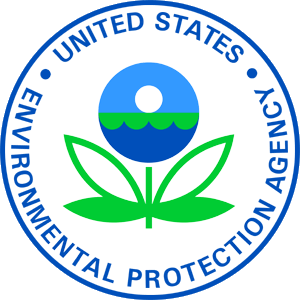
The EPA and the Agency of Toxic Substances and disease registry does claim that children do differ from adults in their susceptibility to hazardous chemicals, including carcinogens and neuro-developmental effects of the fire retardants commonly used in baby mattresses. Companies who manufacture their own mattresses give you the power to ask for a doctors note to omit any fire retardants that are mandated by law in their mattresses. When you buy from companies that import their products, you do not know much of where their product is coming from. These companies tend to buy in bulk; there is a risk of buying mattresses with unknown dangerous or banned chemical flame retardants.
- Click to learn more about Why Should I Get A Chemical Free Mattresses?. (all are fire retardant free)
- Click to learn more about Organic What Is The Mattress Manufacturing Process?.
- Click to learn Why Organic Mattresses Are Better?.
- Click to learn What Makes A Mattress Organic?.
- Click to learn about types of organic mattress ingredients.
- Click here to read how you can obtain a doctors note to avoid all fire retardants including Borate.
- Click here to find out if there will be fire retardants in your mattress.
- Click here to read more about Is Wool A Natural Fire Retardant?.
- Click here discover what is off gassing.
LEARN MORE
